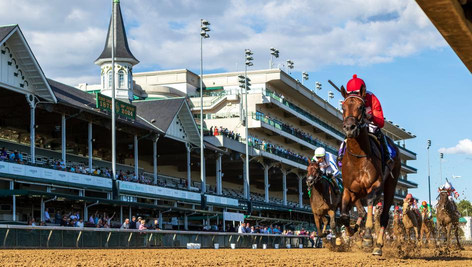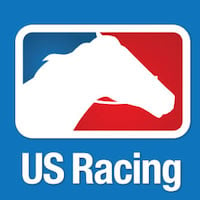

November asserts itself as the most pivotal month for juvenile Thoroughbreds, marking the definitive shift from short-distance sprint campaigns to the demanding endurance required of potential Triple Crown contenders. This period immediately follows the Breeders' Cup World Championships, often serving as the proving ground where promising two-year-olds must demonstrate the capacity for two-turn racing and extended stamina.
Owners and trainers meticulously analyze their rising stars, identifying those possessing the physical maturity and mental fortitude necessary to navigate the rigorous series of Kentucky Derby prep races. We specifically turn our attention to the historic Churchill Downs meet, which annually hosts the centerpiece of late November racing: the Kentucky Jockey Club Stakes. This race offers critical qualifying points, immediately establishing its winner as a significant figure among the burgeoning list of Kentucky Derby contenders for the following spring. This November stop demands excellence, propelling serious athletes forward while filtering out those who simply cannot handle the distance or the competition.
The Kentucky Jockey Club Stakes boasts a rich and essential history, solidifying its status as a foundational element of the North American racing calendar since its inauguration. Run annually at the hallowed grounds of Churchill Downs in Louisville, Kentucky, this Grade II event traditionally anchors the closing weekend of the fall meet.
Its placement on the calendar is anything but accidental; management strategically positioned the race to test two-year-olds over the very same 1 1/16-mile distance and main track surface they will encounter in the subsequent spring’s biggest race. This early exposure provides invaluable data, helping trainers gauge their juveniles' ability to handle the signature surface and the tight turns characteristic of the Louisville oval. Furthermore, the race honors the foundational organization responsible for operating the famed racetrack, linking its competitive present directly to the rich traditions of Kentucky horse racing, where every race carries historical weight and contributes to the grand narrative of the sport.
Examining the roster of past Kentucky Jockey Club Stakes winners reveals a clear pattern of quality, showcasing horses who successfully translated early potential into major three-year-old careers, often positioning themselves as prominent Kentucky Derby contenders. For instance, horses like Honor Code, although experiencing a truncated three-year-old campaign due to injury, displayed the exceptional raw talent and closing speed demanded by the race, later becoming a Grade I winner at four. McCraken, another notable victor, followed his Kentucky Jockey Club win with a successful path through the three-year-old season, proving the immediate relevance of this late-season victory.
| Year | Winner | Jockey | Trainer | Time |
|---|---|---|---|---|
| 2024 | First Resort | Luis Saez | Eoin G. Harty | 1:43.10 |
| 2023 | Honor Marie | Rafael Bejarano | Whit Beckman | 1:44.31. |
| 2022 | Instant Coffee | Luis Saez | Brad H. Cox | 1:45.25 |
| 2021 | Smile Happy | Corey Lanerie | Kenneth McPeek | 1:43.94 |
| 2020 | Keepmeinmind | David Cohen | Robertino Diodoro | 1:44.52 |
While not every winner triumphs in the subsequent Run for the Roses, the Kentucky Jockey Club Stakes consistently identifies top-tier talent. The race acts as a litmus test; horses demonstrating the necessary stamina and speed under pressure here nearly always continue on the official Road to the Roses, earning their spots among the early pool of Kentucky Derby entries and validating the race's status as a top-tier proving ground for future champions and high-profile performers in the sport.
The Kentucky Jockey Club Stakes carries substantial weight not just for prestige and the sizable purse, but, most critically, for its allotment of points on the Road to the Kentucky Derby (RTKD) system. As a Grade II contest run late in the year, it offers the standard 10-5-3-2 point distribution to the top four finishers, respectively. While these point totals might seem modest compared to the 100-point races in the spring, they are absolutely crucial at this early stage.
Accumulating 10 points in November gives a promising juvenile a significant head start, immediately placing them on the RTKD leaderboard and alleviating the immense pressure faced by other prospects who need to play catch-up later. The points incentivize elite competition, ensuring the Kentucky Jockey Club Stakes field consists of the best-performing two-year-olds looking to confirm their ability to compete in the demanding series of Kentucky Derby prep races. Securing these early points effectively buys trainers breathing room, allowing them more flexibility in mapping out the arduous three-year-old campaign leading up to the first Saturday in May.
The specific configuration of the Kentucky Jockey Club Stakes—1 1/16 miles on Churchill Downs' main dirt track—presents a unique and challenging test for young runners, effectively serving as an early rehearsal for the Derby distance. Two-year-olds transitioning from sprints or one-turn miles must adapt quickly to the two-turn setup, demanding a new level of physical conditioning and tactical control. The short run to the first turn at Churchill Downs often creates immediate traffic problems, forcing riders to make quick decisions regarding position. The 1 1/16 mile distance also demands a specific blend of speed and staying power; speed figures must be high, but the horse must also prove capable of extending that speed through the entire long stretch run.
This test of maturity makes the Kentucky Jockey Club Stakes one of the most revealing Kentucky Derby prep races, as only the truly resilient colts can successfully close out the race while maintaining their form, demonstrating the necessary physical maturity to handle the rigors of distance racing.
The hunt for legitimate Kentucky Derby contenders always begins with identifying the elite juvenile trainers who consistently target this specific November fixture. Trainers like Todd Pletcher, Brad Cox, Steve Asmussen, and Chad Brown invariably dispatch their most promising two-year-olds to Churchill Downs, viewing the Kentucky Jockey Club Stakes as a non-negotiable step in the Triple Crown preparation.
We closely monitor maiden winners and allowance runners who have recently transitioned to two turns successfully, exhibiting powerful strides and controlled finishes. A colt who breaks his maiden at a mile and then ships into the Kentucky Jockey Club Stakes shows immediate intent, signaling the barn’s high confidence in the horse’s distance capabilities.
Furthermore, analyze horses who ran strongly in the Breeders' Cup Juvenile but did not win; a horse finishing third or fourth in that Grade I event, demonstrating closing power, often finds the Kentucky Jockey Club Stakes an ideal spot for redemption and a crucial addition of RTKD points, solidifying their standing among the emerging Kentucky Derby entries.
Forecasting the likely field for the Kentucky Jockey Club Stakes requires keen observation of specific breeding lines and recent auction purchases, which often pre-identify future Kentucky Derby contenders. Look for progeny of established stamina sires like Curlin, Tapit, or the late Bernardini, whose foals typically improve dramatically when they stretch out to two turns.
Furthermore, specific barns frequently use this race to launch highly-touted yearlings who may have started their careers late due to development. For instance, a well-bred colt campaigned by a leading Kentucky trainer who broke his maiden impressively over a mile in October becomes an immediate candidate, possessing both the pedigree and the demonstrated track success.
We carefully track the entry patterns of these primary operations, realizing that a horse entered here signifies a high degree of confidence in its ability to manage the distance and the inherent pressure of the race, making the Kentucky Jockey Club Stakes a key marker on the way to the 2026 Run for the Roses.
The 1 1/16-mile distance necessitates nuanced tactical dynamics, demanding that jockeys execute a flawless trip, maximizing their mount's energy conservation and positioning. Unlike a true mile race, where speed can often carry a horse wire-to-wire, the extra sixteenth of a mile in the Kentucky Jockey Club Stakes proves detrimental to front-runners lacking actual stamina.
This distance favors horses who can lay close to the lead—a stalking trip—or those who can make one powerful, sustained run from off the pace around the final turn. The tight, demanding turns at Churchill Downs also force speed horses to decelerate slightly, often benefiting the closers who can unleash an intense, sustained burst in the long stretch.
Therefore, when evaluating Kentucky Derby contenders from this race, we analyze not just the winning time, but the pace fractions and the horse’s position at various points, discerning which running style most effectively conquered the unique distance demands of the track and the field.
Success in the Kentucky Jockey Club Stakes depends heavily upon a horse’s genetic blueprint, confirming that pedigree remains an essential factor when evaluating potential Kentucky Derby prep races. Trainers understand that a horse needs both speed from the maternal side and the stamina influence from the sire to succeed at two-turn distance racing truly.
We scrutinize the race entries for colts whose dams showed success running over a mile or whose second dams trace back to important distance-running families. The Kentucky Jockey Club Stakes winner often possesses a balanced pedigree, demonstrating the ability to handle the quick pace and then finish strong, which is precisely the dual requirement for a successful three-year-old campaign.
Analyzing the breeding sheds significant light on a horse's long-term potential, giving us crucial insight into which of these two-year-olds possess the necessary staying power to be considered legitimate Kentucky Derby entries in the springtime.
For sophisticated bettors and racing analysts, the outcomes of the Kentucky Jockey Club Stakes and other late November races provide invaluable strategic insights that shape long-range wagering decisions. A dominant Kentucky Jockey Club winner immediately merits inclusion on any short list of Kentucky Derby contenders, often offering better futures odds before the public catches on later in the spring.
Conversely, a horse that disappoints in this race, perhaps failing to hold a lead or tiring badly in the stretch, necessitates a downgrade, suggesting limitations at distance. We examine the beaten horses as closely as the winner, looking for excuses such as troubled trips or poor pace setup, which might indicate a horse ready to rebound dramatically in its next start.
These November results act as a critical checkpoint, providing concrete evidence of which two-year-olds possess the necessary foundation to endure the demanding series of Kentucky Derby prep races and which need to return to shorter distances. Serious analysis of this month’s form pays dividends come the first Saturday in May.
November doesn't just mark the transition to a new calendar year; it also decisively launches the competitive season for the 2026 Kentucky Derby. The Kentucky Jockey Club Stakes stands as the great separator, demanding two-turn maturity and the heart of a champion under the iconic Twin Spires.
This race confirms the bona fides of every aspiring champion, filtering the flash-in-the-pan sprinters from the bona fide classic distance horses who will become next year's most sought-after Kentucky Derby entries. You cannot afford to miss this crucial turning point.
The serious money moves in November, capitalizing on the early information these races provide. Don't just watch the action—analyze it with us. Stay tuned for exclusive, deep-dive analysis and early futures betting tips so you can place your wagers with the confidence of a professional analyst before the rest of the world catches on to the future champion.


The writing team at US Racing is comprised of both full-time and part-time contributors with expertise in various aspects of the Sport of Kings.























